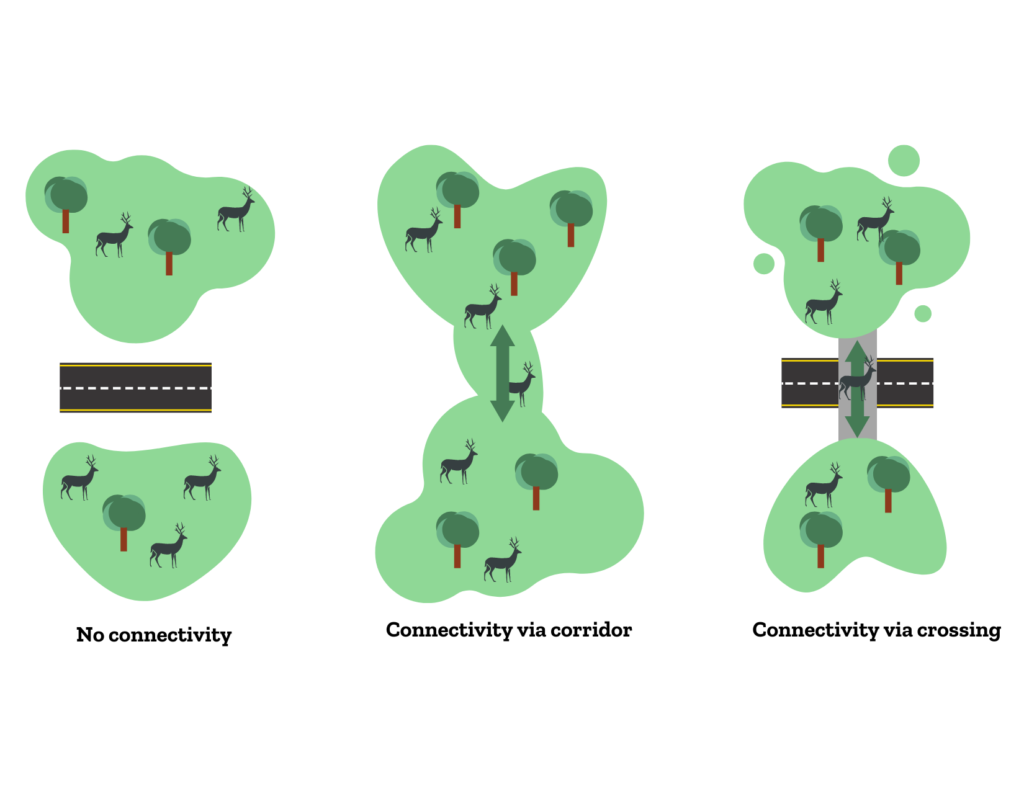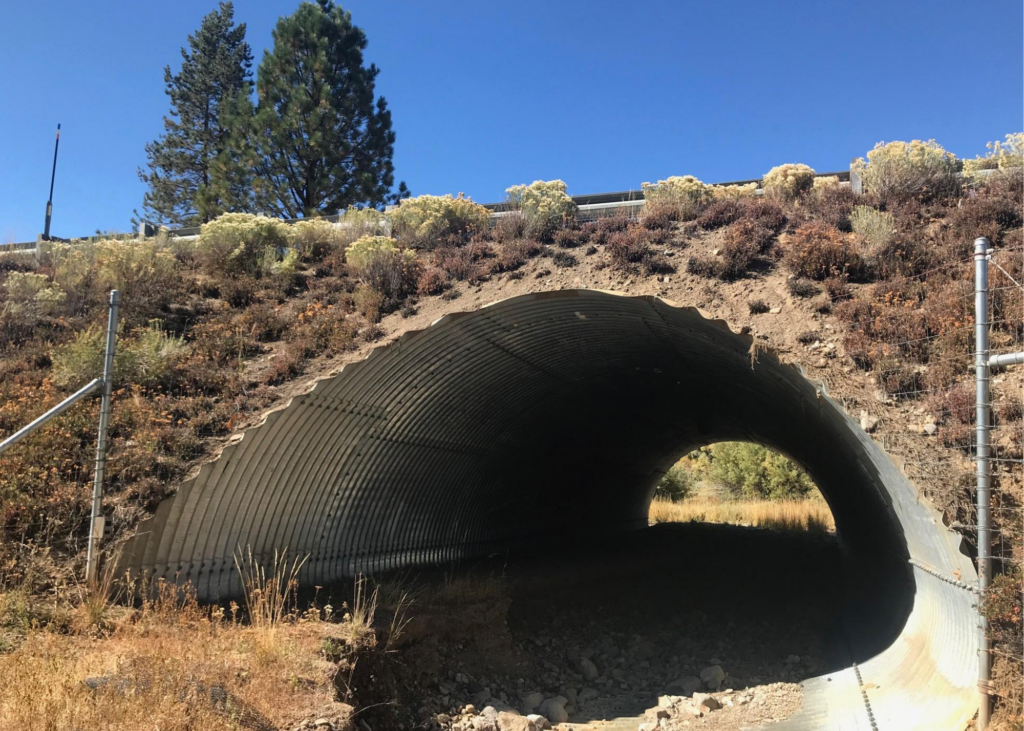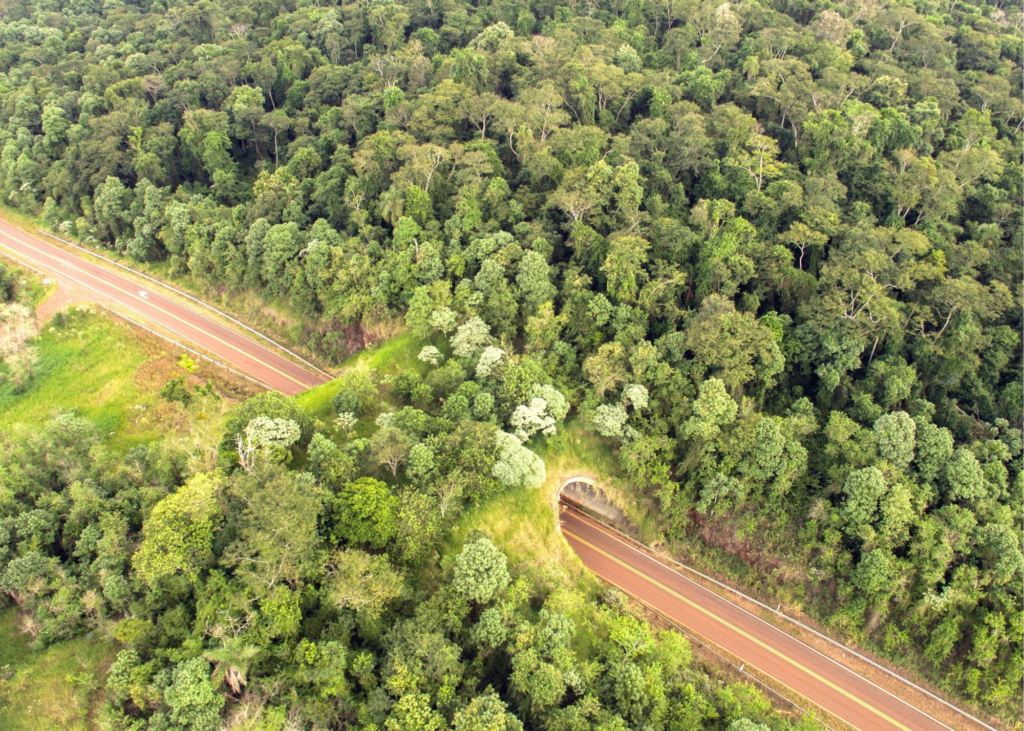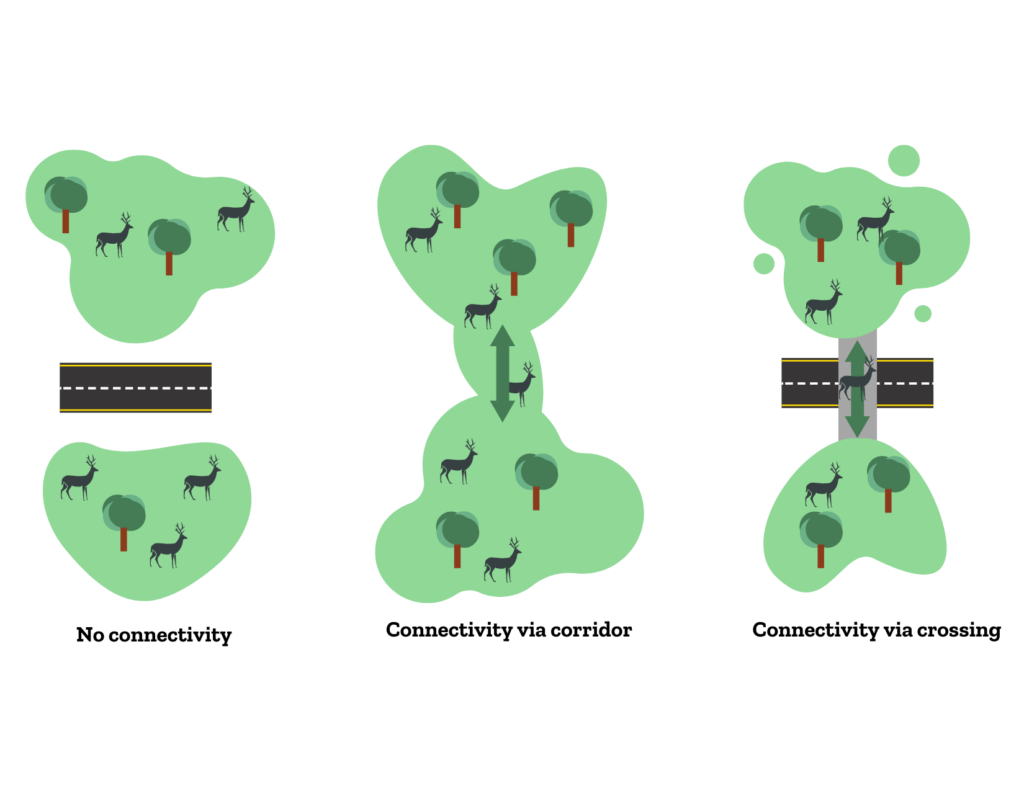What Is a Corridor?
Ecological corridors, or ‘corridors,’ are parts of the landscape that allow animals to move between larger areas of intact habitat. Animals need corridors to reach daily and seasonal needs like food, water, and mates.
What Is a Crossing?
Wildlife crossings are human-built infrastructure, like bridges or tunnels, designed to help wildlife safely cross roads. Crossings reconnect habitat (including corridors) that has been (or will be) bisected and fragmented by roads, railways, and pipelines. Wildlife crossings reduce wildlife-vehicle collisions and wildlife mortality, increase human safety, and reduce the barrier effect that roads and infrastructure create.

What’s The Difference?
While corridors are the routes, or areas or habitat, that animals use to move between larger areas of intact habitat, crossings are man-made linkages that help animals navigate barriers, such as roads, within habitat corridors. Crossings are typically installed within known wildlife corridors to strategically facilitate wildlife passage in areas that see high levels of movement.
CORRIDORS
Corridors are the habitual routes that animals use based on learned behavior, seasonal influence, and inherited traits. Corridors can often be identified by landscape features that indicate optimal paths of movement, including topography, elevation, vegetation type, or physical barriers like roads or rivers that may direct wildlife movement.
Corridors can include:
- Routes wildlife use seasonally to reach water, food or other resources, utilized by a single animal or entire herds.
- Paths between daytime and nighttime habitat; or between resting, feeding, and watering locations.
Examples of corridors:
- The 125-mile migration that Wyoming pronghorn undertake each year, traveling between Grand Teton National Park and Pinedale, Wyoming in the spring and the fall.
- The route formerly used by mountain lions in Southern California to travel between the Pacific Ocean and the Sierra Madre Mountains. This route is currently blocked by freeways and other development.
CROSSINGS
Crossings are human-made features that are installed within a landscape to help facilitate the movement of animals through a corridor.
Crossings can include:
- Wildlife underpasses that enable wildlife to cross underneath roads.
- Wildlife overpasses that help wildlife cross over roads using a man-made, wildlife-friendly bridge.
- Established culverts or other man-made features that wildlife can use to safely cross roads.
Examples of crossings:
- In Wyoming, a series of eight overpasses and underpasses are enabling pronghorn to complete their historic seasonal migration.
- The world’s largest overpass is being designed to reconnect mountain lion habitat in Liberty Canyon in Southern California.
Examples of Crossings

© Rachel Caldwell

Misiones Province, Argentina. Photo: Limba/Drone Film Project.
Additional Resources



